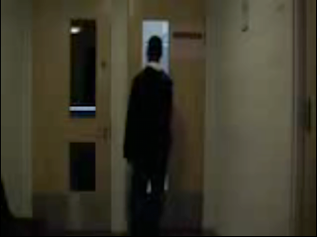Monday, 24 May 2010
Friday, 30 April 2010
'Never Alone' Review
Evaluation: Progression from it to Full Product


Looking back on the preliminary tasks, I feel that I have improved in terms of capturing camera movement and editing the footage. According to the 'The Sign', our group had to deliver a sequence where we had to use a range of shots, angles and the overall appearance of the footage. Whilst filming, it was very hard to capture the shots in a short amount of time as we had to shoot scenes over mainly because of it being out of focus. Lighting was a bit of an issue as filming in the classroom, the lights were quite low causing for the production to look quite blurry at times. In terms of filming our sequence, we encountered major weather problems where the weather was constantly changing from sunny to raining. This meant that in the car scenes, the lighting would change from quite glaring to showing drizzle of rain on the windows. However, whilst watching the sequence in the premiere allowed us to see that the change of lighting and weather didn't make much of a difference. In a way, it showed that time had changed where in the next scene, it denotes Catherine calling Stephanie. This proved to be successful where it create suspense for the audience as they 'wait' for answers.
I feel that from shooting the 'Never Alone', we had learned more on time management in terms of getting the outside shots filmed in one day. This was very hard for us as we had to film scenes a couple of times. it also encouraged to shoot scenes relevant to the storyline and feature a range of shots and angles. When editing 'The Sign', we were unsure how to edit correctly as we were new users of the software. Whereas now, when editing for 'Never Alone', we were able to execute match cuts and close-ups more evidently.
For example, in Marathon Man, at the beginning of the sequence, a series of close-ups and tracking shots were used to display the lead character jogging which can be linked to the name of the film. It sets the audience to believe that someone may be running from something and the way that this is executed allows the audience to want to watch the whole film.
Sunday, 25 April 2010
Rough Cut of 'Never Alone'
Evaluation: Asleep (Student Thriller Sequence)

I think this sequence is very successful as being a thriller sequence, because it features slides with rhetorical questions leading the audience to want to watch more. The black background with white, bold capital letters allows the audience to focus fully on the words. The twinkling, non-diegetic music in the background gradually increases tension until that final 'bang' which suddenly changes the overall tone.

The use of handheld camera movement makes the audience feel they are part of the action. It also adds to the tension where something bad is bound to happen. I think the credits shown at the end of the sequence provides the illusion that it's going to be shown in cinemas possibly. Overall, I think that the sequence is very successful in grabbing the audience's attention by using the conventions of a thriller to do this. For example, the tProxy-Connection: keep-alive
Cache-Control: max-age=0
sion builds with the non-diegetic music and the action where the lead character realises that there was no one around apart from him.

Friday, 23 April 2010
Evaluation: Media Institution and Attracting the Audience
To gain a larger audience in terms of people viewing the title sequence, I would embed it onto Vimeo where users can view the video and post comments. If we had more time to complete the sequence, we could
 use these comments to improve. Once gaining moderate success, I would post it onto blogs such as Twitter and Tumblr where the video can be shared amongst others more quickly. Facebook is the most used social network where by posting the sequence can allow people to comment on it. Ideally, I would post the video to 250 friends and if they 'like' it, I would encourage them to post it to their 250 friends and so forth. This makes it easier for people to access it, where in a number of days, a large amount of people have already watched the film. It also makes it easier for the video to become successful, where they can ultimately transfer it onto YouTube gaining a screen viewing from people all around the world.
use these comments to improve. Once gaining moderate success, I would post it onto blogs such as Twitter and Tumblr where the video can be shared amongst others more quickly. Facebook is the most used social network where by posting the sequence can allow people to comment on it. Ideally, I would post the video to 250 friends and if they 'like' it, I would encourage them to post it to their 250 friends and so forth. This makes it easier for people to access it, where in a number of days, a large amount of people have already watched the film. It also makes it easier for the video to become successful, where they can ultimately transfer it onto YouTube gaining a screen viewing from people all around the world. I would also
 exhibit the sequence in different film festivals such as the London Film Festival, Cannes Film Festival (in France), Tribeca (in New York) and Sundance (cinema festival in Utah). The new material grabs a great audience for the film because more people can watch it easily.
exhibit the sequence in different film festivals such as the London Film Festival, Cannes Film Festival (in France), Tribeca (in New York) and Sundance (cinema festival in Utah). The new material grabs a great audience for the film because more people can watch it easily.

